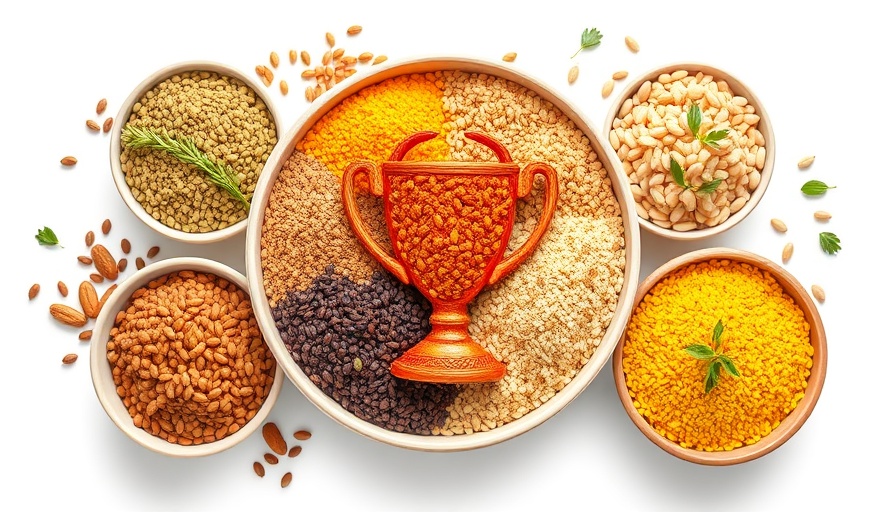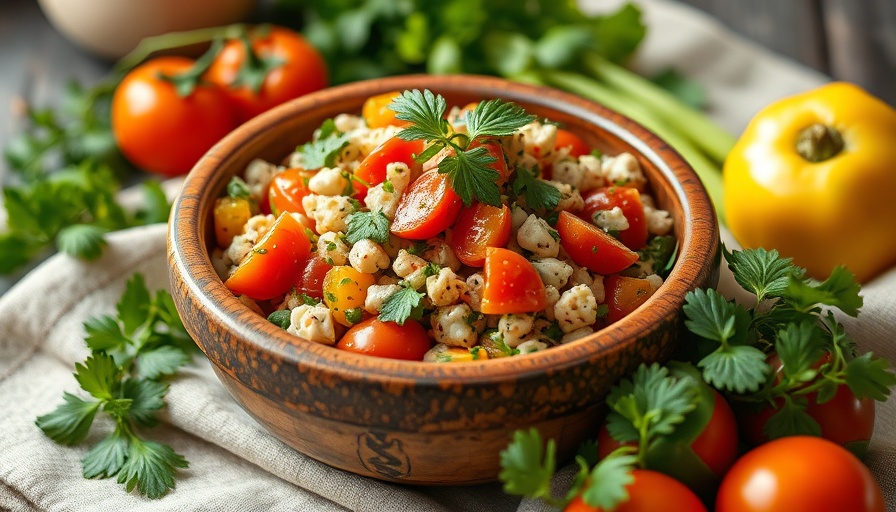
A Flavorful Journey: The Essence of Turmeric Basmati Rice
Golden turmeric basmati rice isn’t just any side dish. This fragrant, fluffy creation is an embodiment of culinary heritage, making it an ideal pairing for curries, grilled vegetables, or any Middle Eastern and Indian-inspired meals. Ready in under 15 minutes, this vibrant yellow rice showcases a delightful fusion of flavors from a few simple ingredients while embodying the essence of sustainable and healthful eating.
Bringing Flavor to the Table with Simple Ingredients
The beauty of turmeric basmati rice lies in its simplicity. Essential ingredients include white basmati rice, which is cherished for its light and fluffy texture, enhancing the earthy flavor of turmeric. Mustard seeds, tempered in oil to bring out their nutty essence, add a delightful crunch. The subtle touch of lemon juice ties the dish together, balancing the warm spices with citrusy freshness. If you love crafting aromatic meals, this recipe provides an easy yet impressive base.
The Health Benefits of Turmeric: More Than Just Flavor
Turmeric, the star of this dish, is more than just a colorful spice; it has a plethora of health benefits. Known for its anti-inflammatory properties, turmeric has been used traditionally to boost immunity and promote overall wellness. Incorporating turmeric into your meals not only enhances flavor but also encourages a healthier lifestyle. Fusion recipes like turmeric rice help make these benefits more appealing and accessible, merging taste with wellness.
Cooking Tips for Perfect Turmeric Basmati Rice
To achieve the perfect fluffy texture, it’s crucial to rinse and soak the rice beforehand, allowing it to absorb water which results in beautifully elongated grains post-cooking. Additionally, frying the rice briefly ensures that each grain stays separate and avoids a mushy outcome. Those new to cooking rice might find it beneficial to follow these steps meticulously for the best results.
Pairing Suggestions: Elevating Your Meals
This golden turmeric rice is not only versatile but also pairs beautifully with various dishes. For instance, consider complementing it with a rich black bean coconut curry or a satay chickpea curry for a balanced, plant-based meal. For those seeking a more indulgent option, serving it alongside grilled chicken or a tangy yogurt sauce can elevate your dining experience further.
Vibrant Variations for Culinary Exploration
Experimentation in the kitchen can lead to unique culinary delights. While traditional recipes shine, variations like adding herbs or different spices can cater to diverse taste preferences. Feel free to enhance this turmeric rice by incorporating sautéed vegetables or nuts for added texture and flavor variation. With a little creativity, the possibilities are endless!
**Embrace This Flavorful Journey**: Whether you're a seasoned cook or a novice in the kitchen, turmeric basmati rice invites you to explore new culinary heights. These straightforward cooking techniques and health benefits provide ample reasons to make this vibrant dish a staple in your home. Share your experience, and let's continue to embrace the joy of cooking together!
 Add Row
Add Row  Add
Add 




Write A Comment